Student Resource: study ideas, questions and activities (pdf)
Rewi Alley; social reformer, educator, fireman, writer, poet, translator, great internationalist, industrialist, revered citizen, potter, soldier, a hero and a friend of China. Edgar Snow, the famous American journalist: “Rewi Alley is unique because he has achieved greatness in a country where few foreigners ever manage to achieve an authentic ripple.” The most travelled European in the Chinese interior and its ‘white veteran’, associate of Mao and Che Guevara. Author of 66 books, always with the aim of bringing about a greater understanding of his second homeland and its people. The man who introduced ‘Gung Ho’ into the Western idiom.
The remarkable story of a country boy from New Zealand who came to witness and influence some of the great transformations of the Twentieth Century in a vast complex country that houses a fifth of humanity – a journey that encountered oppression, civil war, Chairman Mao and the Cultural Revolution. Alley’s quixotic life was a thread woven into an unlikely and rich pattern – an allegorical bridge between West and East. All this from an intensely practical person whom biographer Geoff Chapple, in defiance of the politicisation of the Alley myth, describes as “the god of digging the long drop where it could not contaminate the well water.” A believer in Taoist simplicity and a self-proclaimed country-bumpkin, Alley humbly wrote to his family: “don’t believe printed matter about me – either good or bad. I am a very ordinary person.”
Kiwi Upbringing
Rewi Alley was born on December 2nd 1897, in Springfield, Canterbury, New Zealand. He was named after a Maori chief of legendary courage, Rewi Maniapoto, notorious for his staunch resistance to the British forces during the land wars of the 1860s. When Rewi was eight the family moved to Christchurch where his father was appointed headmaster of a suburban school. Between working on the family farm and school Alley became an avid reader, consuming by candlelight Boys’ Own adventure tales, the romantic classics, The Three Musketeers, Lorna Doone, the novels of Walter Scott and Jules Verne, and on to Dickens and Thackery. Alley wasn’t exactly a model student though. He was told by a Christchurch Boys’ High School maths teacher who was having trouble imparting a trigonometry theorem, that the only thing Alley would be good for was breaking stones. Alley replied, with characteristic practicality, that this would not be such a bad thing if breaking stones was what was needed. He remembers learning Coleridge’s Kubla Khan, (“in Xanadu did KublaKahn/A stately pleasure dome decree …”) through using it as his rote of choice when he had to write lines as punishment for anything from smoking to roasting chestnuts on Bunsen burners. Nonetheless, Alley recalled his time at Christchurch Boys’ with fondness and pride, making the first rowing four and enjoying rugby on the fields of Hagley Park.
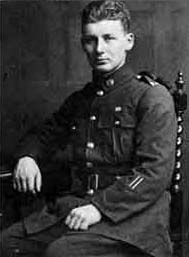
Alley in Army c.1919
Rebellion, Adventure and Death
In 1916, fuelled by ideas of rebellion and adventure, he falsified his age and enlisted in the army. He served in France where he was awarded the Military Medal for bravery and twice wounded. He describes his companions in a tent full of wounded soldiers, an Indian next to him with his buttocks blown off and a German dying on his other side with a hole in his chest, as “tortured children together in hell.” Here and at the front Alley credited the experience of war for teaching him the values of comradeship. On his return from the war he took a soldier’s loan to break in a back-country Taranaki farm with high-school mate Jack Stephens.
They lived in a whare and spent six years enduring “loneliness and struggle”. The work was rugged and arduous toil in isolated country, and when wool prices slumped Alley was forced to leave. He returned to the family home in Christchurch and announced that he was off to China.
Within a few years one brother would become an All Black and graduate with an MA, another brother would become an engineer in Nelson and his younger two sisters would be training to become a teacher and nurse respectively. After such a typically Kiwi upbringing how did Rewi get from here to become a hero of the Chinese people?
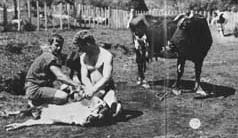
Earmarking a calf on the farm, Moeawatea.
Shanghai: Checking out the Revolution
Inspired by “Auckland Weekly News” reports on China, which were spreading news of the ‘red peril’, Alley thought he would go and “take a look at their revolution”. He made his way to Sydney where he got work as a radio operator on a 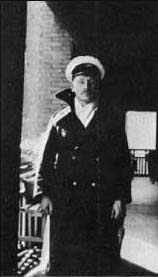 boat to Shanghai and set sail in March, 1927. He arrived in a chaotic Shanghai amidst rising tension between the Communists (reds) and the Guomintang Alley (blues). Although both were anti-imperial, the communist rebellion faced violent internationally-funded suppression. Alley obtained a position in the British-run Shanghai Fire Department, began language studies and took trips to towns, temples, gardens and canals on the perimeters of Shanghai. The sounds of warship sirens mingled with cosmopolitan nightlife: Alley saw a Shanghai of two halves. On one side it was a foreign run, international metropolis, affluent, gay, rich, steaming with the sound of jazz and the last opium-dazed colonial cocktails. On the other, utter destitution and want, child labour, and appalling living conditions for the majority of its inhabitants. Alley was sickened by the waste of human life and sought out Dr. Joseph Bailie, an Irish-American missionary, in an effort to comprehend China’s ills. Bailie urged Alley to go to the villages and to attempt to understand China’s problems first-hand using that social base as a means to a solution. After 10 months he became chief fire inspector, encountering numerous ‘hazards’ on the way:
boat to Shanghai and set sail in March, 1927. He arrived in a chaotic Shanghai amidst rising tension between the Communists (reds) and the Guomintang Alley (blues). Although both were anti-imperial, the communist rebellion faced violent internationally-funded suppression. Alley obtained a position in the British-run Shanghai Fire Department, began language studies and took trips to towns, temples, gardens and canals on the perimeters of Shanghai. The sounds of warship sirens mingled with cosmopolitan nightlife: Alley saw a Shanghai of two halves. On one side it was a foreign run, international metropolis, affluent, gay, rich, steaming with the sound of jazz and the last opium-dazed colonial cocktails. On the other, utter destitution and want, child labour, and appalling living conditions for the majority of its inhabitants. Alley was sickened by the waste of human life and sought out Dr. Joseph Bailie, an Irish-American missionary, in an effort to comprehend China’s ills. Bailie urged Alley to go to the villages and to attempt to understand China’s problems first-hand using that social base as a means to a solution. After 10 months he became chief fire inspector, encountering numerous ‘hazards’ on the way:
“I remember going to one place: a white Russian lady had a boarding house, and she wanted a license for it, but she had filled up all the exits with bathrooms, and she said ‘wait a minute’ and went into her bedroom, and came out without anything on except for a wrap over her shoulders, and she said’come in darling,’ and I said ‘Oh, I’d better go’.”
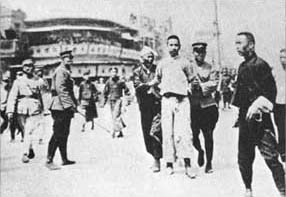
Street arrest in Shanghai 1927
He took the opportunity to observe further the disgusting labour and living environment that common people worked in. From using No.8 wire on his farm he now witnessed eight-year old girls working sixteen hour shifts getting whipped bloody with it by their foremen, and, on a visit to Wuxi to witness the springtime plum blossoms, saw silk workers accused of being communists executed in the streets.
Having no strong political views himself, he nevertheless wanted to understand what was happening and sought out the advice of an English friend who gave him a copy of Marx’s Das Capital.
Catastrophic Famine
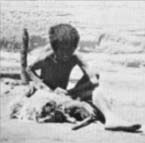 By the late 1920s catastrophic famine had swept through many regions of China. Although unreported by the press at the time, perhaps as many as 6 million people died. Alley, increasingly uneasy, visited the devastated areas and wondered at how he could help. As well as constantly visiting villages on weekends, he used his annual leave to help the China International Famine Relief Commission with canal building in Mongolia. He adopted a 14-year old refugee, ‘Alan’, an orphan of the north-west famine, booking him into a Shanghai boarding school.
By the late 1920s catastrophic famine had swept through many regions of China. Although unreported by the press at the time, perhaps as many as 6 million people died. Alley, increasingly uneasy, visited the devastated areas and wondered at how he could help. As well as constantly visiting villages on weekends, he used his annual leave to help the China International Famine Relief Commission with canal building in Mongolia. He adopted a 14-year old refugee, ‘Alan’, an orphan of the north-west famine, booking him into a Shanghai boarding school.
“I thought Mr Alley was very kind to me. He used to take me for a walk every afternoon, and almost every evening after dinner. We used to go out for a walk in the country. Outside of Shanghai there’d be a lot of kids running behind us calling out gao bizi, gao bizi – high nose, high nose – or yang guizi, yang guizi. Well I thought such a man is very friendly to the Chinese people, why should they call him a foreign devil? I made the impression of being very angry and Mr Alley saw that. “You should not be angry,” he said. “Chinese people have been oppressed by the foreigners for the last hundred years, ever since the Opium War, so they don’t know which foreigner is good and which foreigner is bad. High nose? All right, let them call it. Foreign devil? All right, let them call it. You should not get angry, they are quite all right.”
In 1932, Alley was appointed League of Nations representative in charge of dyke repair at Wuhan, and again experienced first hand the effects of corruption and cruel oppression. The local governor was determined to eradicate the communists from the city, including thousands of refugees fleeing the floods, “They’re communists, ” the commander told Rewi. “Get them out in two weeks or I’ll turn the machine guns on them.” Driven out by bayonet, Alley arranged for their passage to distant parts of the dyke. Sir John Hope Simpson, the British official in charge of Alley, credited him with saving the lives of hundreds of thousands of people.
“Alley arranged for camps up and down the river on our works, made arrangements for supplies of food to be ready both for the journey and on arrival, engaged junks, sampans and tugs and succeeded in breaking up the refugee camps and transporting those hundreds of thousands to their quarters without any serious accident.”
 In Wuhan Alley adopted his second son, Mike. On a visit to an orphanage which needed a wheat supply he was told by a commander “see that boy? He is a Red Army kid. If you leave him here the Guomintang will take him away and shoot him. Why not take him as a brother for your other child.” Alley agreed, but arranged for him to be safeguarded until his return from a trip back to New Zealand with Alan. In New Zealand they experienced oppression of a different kind, when Alan was taunted for being a “fucking chink in first class” on a South Island train, and refused entry into public swimming baths in Australia.
In Wuhan Alley adopted his second son, Mike. On a visit to an orphanage which needed a wheat supply he was told by a commander “see that boy? He is a Red Army kid. If you leave him here the Guomintang will take him away and shoot him. Why not take him as a brother for your other child.” Alley agreed, but arranged for him to be safeguarded until his return from a trip back to New Zealand with Alan. In New Zealand they experienced oppression of a different kind, when Alan was taunted for being a “fucking chink in first class” on a South Island train, and refused entry into public swimming baths in Australia.
On his return to China, Alley was appointed Chief Factory Inspector of the Shanghai Municipal Council where he pushed for better health and safety standards. But the Council was corrupt and largely impotent. Eager for change, Alley joined a small group of western Marxist intellectuals, including YWCA organisers and American journalists Agnes Smedley and Edgar and Helen Snow, (Edgar Snow was originally dispatched to China to establish that the new order in China was safe for foreign travel). In the years 1932-37 he wrote (under aliases) for the radical journal Voice of China and worked secretly for the Communist underground, including having to wash ‘bloody money’ obtained by Red Army raids executed under the guise of anti-Japanese strikes.
The Japanese had dreams of an Oriental empire and began in 1937 to launch attacks against China. Alley’s family was split up when his boys decided to fight with the communists against the Japanese and in Shanghai he faced the problem of dealing with hundreds of thousands of unemployed and displaced factory workers in a fierce and chaotic war-zone. With Edgar Snow, covering the Shanghai battle for the British Daily Herald, Alley surveyed the scenes of death and loss and wondered about solutions.
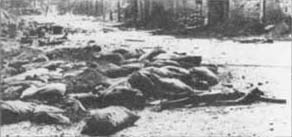
1937 The devastating results of the Japanese invasion in Shanghai.
Both men had now lived in China for many years and knew the language and history. They knew why industry had grown up around the international concessions (zones) and that these concessions were clustered around the coastal ports. Militarily this was a disaster and the Japanese had exposed this, blockading and knocking out 80 percent of China’s industry.
Gung Ho and Don Quixote
Their answer, whose genesis occurred in a meeting chaired by Helen ‘spark plug’ Snow (as Alley called her), was to keep production going inside the blockades. Their plan was to divert production away from the coast to the inland areas and to provide jobs for fleeing refugees. This would be achieved through a series of ‘Chinese Industrial Co-operatives’. Under the slogan ‘Gung Ho’, meaning ‘work together’, a revolutionary idea was born. Alley arrived with a suitcase and a slogan in the then capital of China, Wuhan to sell the idea to the Chinese Government, and gained the support of writers W.H. Auden and Christopher Isherwood (who were in China to write a book on the war) and also the British Ambassador. As the British still had considerable investment in China, Alley got an imperial warrant from the Chinese Government to freight factories inland and to keep them producing. Alley’s theory, as always not concerned with polemics or semantics, was simple: get the people to do it themselves and build on a group consciousness. A ‘just do it’ for the people, a slogan that sold action, not shoes, one that would become internationally synonymous with a particular attitude.
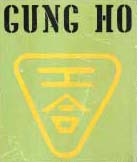
The setting up of the various co-ops required exhausting and dangerous travel for Alley. Needing to be wary of all factions, he secured loans and, travelling by bus, as a covert passenger past checkpoints, on the backs of trucks, by train, by boat, bike and foot, he established co-op headquarters over a vast area of China. It was a process that was often lonely and disheartening: as he watched a flea crawling up his bunk, the smell of incense drifting in the night to appease spirits before entering the rapids of the Gong river, he wrote:
“Second night on this boat I suddenly feel very much alone. A feeling I dread rather and try to avoid by being busy – usually very unsuccessfully. But a day – a cold day of inaction – does not improve things and I am left wondering what sort of a Don Quixote I am tilting at windmills all over the place … I am concerned as ever of the immense importance of our job under any circumstances – war or peace. It holds the seeds of a real future. But I wish I did not feel so futile in the face of it all. Would like to be in Baoji for a while to get all enthusiastic there again.”
History was to prove this a needless worry – in fact Alley’s work perhaps proved to be too successful. Starting small, with scant resources and broken machines, the co-ops proved highly skilled appropriators and successful factories were soon producing everything from trucks, to grenades, helmets, machinery, irrigation, boilers, furnaces, blankets, cotton, cloth and boots.

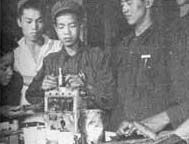
The co-ops struck a popular chord and provided leadership, employment and, most importantly, survival for the workers involved. They were set up easily, the loans were paid back quickly and the factories worked efficiently. Their success aroused suspicion though, and in the chambers of commerce and government, rumours spread among the Guomintang that ‘the communists had come – factories were being set up without owners!’
Alley a Politically Powerful Symbol
Around this time the myth-makers began to see the value of Alley as a potent symbol, working tirelessly among the rubble of Japanese destruction. Edgar Snow advised a prominent Chinese politician seeking American funds, “Alley as a personality should be a good selling point for your talk in America … don’t feel too nationalistic on this point. You know yourself you’re fortunate to have such a wonderful chap as Alley to lead the work.” American and British correspondents portrayed Alley as someone with guts and determination, leading a grass-roots, democratic movement; this vision became essential in bringing on board a western public to support the Chinese war effort. An Indian journalist, wrote this account of a stoic Alley in Chongqing, China’s war capital in 1939:
“As the bombs were crashing all over the city, the two-hundred odd people in the restaurant sat or stood with tense and strained expressions. Chopsticks were dropped, the soup grew cold in the bowls. Who could think of eating at such a time?”
“Unhurriedly, as if no bombs were crashing around, he was eating his food. And as he ate he was calmly reading his newspaper.”
President Roosevelt enquired from time to time on the progress of the Gung Ho programme and received a report back from prominent American politician Wendall L. Willkie:
“In Lanzhou I visited some of the Chinese industrial co-operatives. I met there the quiet sincere New Zealander, Rewi Alley, who has made Indusco an international word and a symbol of what can be done by a people determined to lift itself by its own bootstraps.”
Creative Education at Shandan
The official Chinese government played on the Alley myth, using it for political ends while progressively removing actual funding. After reaching a peak in 1940/41 the anti Japanese war, and civil war between the Guomintang and Communists, eventually made Gung Ho unworkable. Undeterred, Alley used the considerable foreign funds at his disposal to set up schools to train Gung Ho cadres. In 1942, together with Oxford-educated English teacher George Hogg, they retreated to the remote Gobi desert in China’s north-west to set up a technical school, initially in Shuangshipu and then in isolated Shandan (1944) to distance themselves as far as possible from suspicious Guomintang spies. Hogg would act as headmaster while Alley would travel around China raising funds, quelling political opposition, recruiting teachers and creating co-ops to work alongside the school. It was founded around ideas of balance: “Create and Analyse” was its motto, bringing together what Alley saw as the two sides of productive ability.
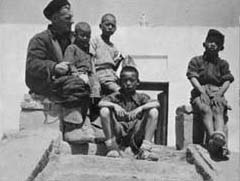
Teacher and students at Shandan.
It was a method of half work and half theory and a personalised reaction to a world, as Geoff Chapple writes, “tipped crazily into war, corrupt cities, racial hatreds and individual self seeking.” Strapped at school every day himself as a child, Alley felt this wasn’t quite the way and, drawing on his own experiences of what worked, he fostered a loose, creative learning environment where lessons were realised in practical achievement. A major principle was the combination of education and production with well developed social, economic and pedagogical goals. Lessons linked practice, emphasising co-operative activity, promotion of economic decentralisation and self-reliance, integration with the community, and development of the individual.
Modestly Alley never applied his principles beyond the village environment, never extended them to a general theory of social organisation. For Alley it was simply a solution to a problem, like keeping a truck on the road through making a gasket out of the resources he had around him: his kit bag, cellulose and glue. Chapple calls him “the god of running repairs”. The school worked on the principles of starting small and sought, against enormous political pressures, to avoid what Alley called the corruption of bureaucracy.
“We couldn’t talk politics in those days, but we could carry out a political message through production … struggle and co-operation were the basics of our teaching in those days. We tried to arm those kids so they were able to do things. If you didn’t arm them with technique then they wouldn’t be able to do anything, they could only talk, and talk gets you nowhere.”
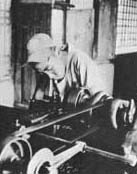
 Alley saw the simple application of energy and creativity as a way to achieve his goal for China’s peasant youth: “to stampede darkness”. The Shandan Bailie School transformed the village in which it operated and achieved an international reputation. Articles appeared in the New York Times and Christian Science Monthly, a United Nations Food and Agriculture pamphlet outlined the school’s achievements, visits from foreign governments, including the British ambassador flying in on a DC-3, led to the school being viewed as a model in how to obtain a big result from a relatively small input of aid. Along with the interest it attracted in Asia it seeped into aid and education debates in the West, making a particular appeal to these working with development theory and practice. This productive pocket in the arid and poor Chinese north-west continues to be influential, especially in the developing African nations. A 1999 posting on a University of Waikato discussion board pondering the future of education in the new millennium reads:
Alley saw the simple application of energy and creativity as a way to achieve his goal for China’s peasant youth: “to stampede darkness”. The Shandan Bailie School transformed the village in which it operated and achieved an international reputation. Articles appeared in the New York Times and Christian Science Monthly, a United Nations Food and Agriculture pamphlet outlined the school’s achievements, visits from foreign governments, including the British ambassador flying in on a DC-3, led to the school being viewed as a model in how to obtain a big result from a relatively small input of aid. Along with the interest it attracted in Asia it seeped into aid and education debates in the West, making a particular appeal to these working with development theory and practice. This productive pocket in the arid and poor Chinese north-west continues to be influential, especially in the developing African nations. A 1999 posting on a University of Waikato discussion board pondering the future of education in the new millennium reads:
“Reading Rewi Alley’s autobiography and the story of the Shandan Bailie School is proof that something brilliant can be created out of nothing. His catch cries Yo Banfa ‘we have a way’ and Gung Ho ‘work together’ had relevance for China’s education and modernisation and also I believe NZ’s education today and tomorrow.”
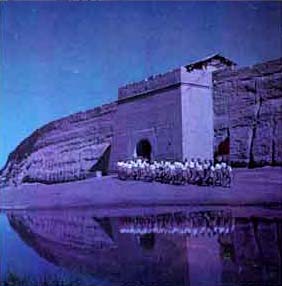
Shandan students march through the South Gate to Hogg’s tomb, mid-summer 1947.
Liberation: Elation and Despair
All this from a man considered a duffer at school. After the death of George Hogg in 1945, Alley became headmaster and remained in Shandan until Liberation (i.e. Mao Zedong’s Communist overthrow of the Nationalist Guomintang) in 1949. Until 1949 suspicions of communist insurgency at the school had been worsening, and as the Communists advanced, a group of retreating Guomintang approached Shandan, with orders to kill Alley, execute his senior boys and destroy the school and plant to keep it from the communists. Under threat of attack from 1000 soldiers and with a Guomintang machine gun emplacement trained on the school, Rewi was hard-pressed to come up with a plan. With only a couple of working rifles, the situation was tense, but helped by a little smart deceit born from their close relations with the villagers:
“Has the Bailie school got rifles?” The Guomintang army demanded in the last days.
“Why of course, they make them in the machine shops!” the people answered. “You know they have as many as they want. Machine-guns too! They can make them also. And they get iron ore from the hill and smelt it to make bombs with!”
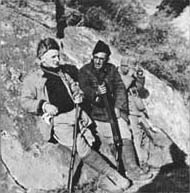 Besieged by the evacuating Ma Bufing militia (Guomingtang) and with trucks of explosives having arrived for the job of destroying the school, Rewi and his students warily continued their daily routine. “Of course I was not scared of being killed. I had been through all that in World War 1. But a lot of kids depended on me. If I had been shot it would have been chaotic.” By good fortune they were spared the chance of demonstrating heroics when the Liberation Army cut off the supply road to the west of the school. On September 19, 1949 came the day that Rewi and George Hogg had been working towards since the school’s inception. Red Army Soldiers entered the east gate of the school.
Besieged by the evacuating Ma Bufing militia (Guomingtang) and with trucks of explosives having arrived for the job of destroying the school, Rewi and his students warily continued their daily routine. “Of course I was not scared of being killed. I had been through all that in World War 1. But a lot of kids depended on me. If I had been shot it would have been chaotic.” By good fortune they were spared the chance of demonstrating heroics when the Liberation Army cut off the supply road to the west of the school. On September 19, 1949 came the day that Rewi and George Hogg had been working towards since the school’s inception. Red Army Soldiers entered the east gate of the school.
The school’s reputation was high after liberation, having dismantled their trucks and buried gasoline in disused mine shafts to keep them from the Guomintang. Yet within two years Alley was to have control taken away, a victim of political decisions decreeing a different educational emphasis to that of Shandan. The Communist Party had decided to stress the development of heavy industry.
He wrote: “In the years following liberation we kept on, and I would have liked to carry on for the rest of my time doing that kind of thing, because I felt it was so important, and I still feel it’s necessary to give an all-round education to people in that way, but the importance of specialised technical education was great at the time, and all the organisations wanted people who could do one thing …”
Describing the years at Shandan as “the richest and happiest years of my life”, Alley was deeply saddened at the loss. As he wrote in a letter to a friend:
“I have failed to get this ideal of a productive school accepted, and it may be that I have seen the last of Shandan, and the last of China. One dies quite a number of times before the actual demise, I guess. We go in stages.”
After the Revolution: Observation and Travel
Alley’s value as a symbol with politically currency became pronounced again, and he was co-opted by the new Communist government to serve its interests. He returned to Beijing where he was urged to submerge personal goals for the greater good of the new Chinese state. He did this, in the 1950’s attending peace conferences and promoting an understanding of the Chinese cause in an effort to counterbalance the hostility latent in the western media.
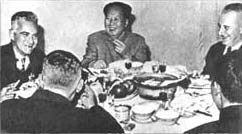
Edgar Snow, Chairman Mao and Rewi Alley.
He was a voluminous letter writer, corresponding with friends and associates at the BBC, the New York Times, the Far East Report, filmmakers, writers. Although often uneasy about working with words rather than action, Alley’s main occupation during this time was writing and observation. While previously his production efforts had resulted in goods and capable people, now, through his speeches and writings, the outcome was the construction of an international network to further understanding. His first book Yo Banfa! and its sequel The People Have Strength set a pattern that his other works were to follow: using observation and past experience to measure the size of Communist achievement. In Man Against Flood, Alley’s account of the 1954 floods, he is able to draw a comparison between then and his time in Wuhan when he was in charge of the dyke repairs. The 1931 flood killed 145,000 people, and 30,000 more died in the 1954 flood. The Yangtze actually ran higher during the 1954 flood, but the post-Communist Revolution Chinese were better organized. An army of workers increased the height of the levies with over 5 million sandbags. Alley wrote that the people worked while singing the flood chant:
What are we building this dike for, hai-yu?
For our industrialization, hai-yu.
Let smoke come from the smokestacks and machines whirl, hai-yu.
Protect the power plants so that we shall have power, hai-yu.
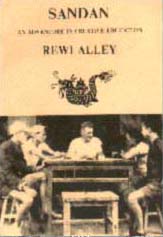 As well as pioneering English translations of Chinese poetry, history and peasant stories, he spent the end of the 1950s working on a manuscript that distilled his experiences as a headmaster. Shandan – an Adventure in Creative Education, published firstly in 1958, was to become enormously influential, reprinted internationally many times. Alley’s ideas had a natural affinity with thinkers concerned with ‘small’, autonomous, ecological solutions to development problems, such as the economist E.F. Schumacher (Small is Beautiful: Economics as if People Mattered) with his emphasis on ‘decentralism’; and Ivan Illich (Deschooling Society) who argued that modern technological schools made students powerless. Alley’s book was republished in Sweden in 1979, and by the African Book Collective in 1989, “both for its intrinsic importance and for its relevance to the southern African region today.” Alley was invited twice by the Indian Prime minister, Nehru, to come to India to begin a movement of village co-ops there, but his commitment to China remained firm and his work for the peace movement gave him the capacity to remain in China in an official role.
As well as pioneering English translations of Chinese poetry, history and peasant stories, he spent the end of the 1950s working on a manuscript that distilled his experiences as a headmaster. Shandan – an Adventure in Creative Education, published firstly in 1958, was to become enormously influential, reprinted internationally many times. Alley’s ideas had a natural affinity with thinkers concerned with ‘small’, autonomous, ecological solutions to development problems, such as the economist E.F. Schumacher (Small is Beautiful: Economics as if People Mattered) with his emphasis on ‘decentralism’; and Ivan Illich (Deschooling Society) who argued that modern technological schools made students powerless. Alley’s book was republished in Sweden in 1979, and by the African Book Collective in 1989, “both for its intrinsic importance and for its relevance to the southern African region today.” Alley was invited twice by the Indian Prime minister, Nehru, to come to India to begin a movement of village co-ops there, but his commitment to China remained firm and his work for the peace movement gave him the capacity to remain in China in an official role.
In 1958 Alley travelled 40 000 kilometres around Chinese provinces, by truck and jeep, observing the practical progress of the Liberation, writing China’s Hinterland in the Great Leap Forward, the only book published in English documenting the Great Leap Forward. Observing a group of transport workers shifting bricks, “stripped to the waist and wearing shorts, sandals and a wide-brimmed straw hat the Hebei peasants make” he paints a picture of a familiar scene, but notes acute changes:
“To me there is a whole world of difference. The change is in their very bearing. Waiting to cross the street tramway lines they stand erect and the leader, a answer. They stand up. No longer do they work all day for a grasping contractor who exploits them, tossing a few coppers at the end of a day’s sweating …”
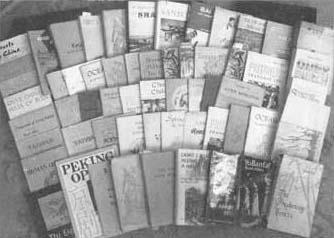
Books by Rewi Alley.
Some of the writing is unashamed propaganda – the books after all were published by the Chinese Government – and Alley unabashedly recounts tales seemingly unlikely to jaded Western eyes. One man, claims Alley, rowed into the flood to rescue an out-of-control sailing junk loaded with bamboo. His last words before the Yangtze claimed his life: “This is public property! We must not lose it!” His pictures of China are a positivist account of the Communist improvement. Alley notes that there was some starvation in some areas of China; this is an extraordinary understatement if you believe other accounts that over 30 million people died during this period. He did have some doubts about policy, but these rarely appear in the books. The Australian journalist Wilfred Burchett recounts that before the Great Leap Forward Alley was apprehensive about centralisation and the state controlled organisation of productive resources:
“With everything run from the top, they are going to lose that wonderful inventiveness and ingenuity which is inborn in every Chinese worker and peasant. The richness of initiative that comes from compost heaps and factory benches can never be dreamed up by bureaucrats, no matter what their technical and academic qualifications, working at some central planning centre.”
For the most part Alley was an ardent supporter of the revolution. Carried forward by its momentum; a regenerating China was indeed achieving exciting and energetic advances, especially in river control, food distribution and industry.
Return to Godzone
In 1960, Alley returned to New Zealand for three-months, his first visit in 23 years, meeting the Prime Minister Walter Nash and giving accounts of the new China. He looked forward to “that excellent New Zealand institution, a cup of tea in bed, with the newspaper to glance over …” , but found he was saddened by the materialism of a newly rich and affluent society, settling into quarter acre apathy, and by newspapers seemingly dedicated to the Queen. The internationalist, with an anthropological eye, made some telling observations about the land of his birth:
“We have ten minutes of collective living a day,” Rewi reported one earnest Kiwi telling him, “between ten to six, and six o’clock.”
On this and later visits Alley was not afraid of speaking out against what he saw as American imperialism in Korea and Vietnam, a stance which saw him treated as “a kind of criminal, very suspect.” New Zealand was tied by military pacts, ANZUS and SEATO to the policies of the United States, and in the midst of paranoia over the ‘red scare’, China was a dirty word. Displeasure in conservative elements of New Zealand society was offset by reunions with relatives and good friends, and by satisfaction and enjoyment in New Zealand’s beauty. He drew inspiration from the whakapapa of his namesake, was inspired by the Maori collective way of working, and over the course of his visits he drew pleasure from a sense that there was a growing interest in China. Alley also made original perceptive comments about New Zealand’s future, particularly New Zealand’s self-satisfied reliance on Britain and a lack of willingness to look beyond its shores and acknowledge its edge status. These observations gain even more poignancy as we enter the third millennium. In his journal Alley’ wrote,
“But everything depends on the sale of exports, doesn’t it? Suppose in the many changes that affect the rest of the worldthose particular exports lose value or are not wanted? It does not feel too secure, too sure of standards reached by short cuts or good fortune in a world that is still largely one of want and denial.”
In his autobiography he wrote:
“New Zealand and Australia are geographically really an extension of Asia into the southern seas – Australasia. As a New Zealander, it has been my hope that the people of my country would join together with the rest of the peoples of the Pacific. In fostering those essentials on which a permanent peace rests, so that in co-operation and in friendship with each other future generations may devote all their energy to their struggle against nature, to wrest from her the abundant prizes she so jealously withholds.”
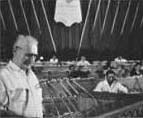 As always, Alley the laid back positivist, focused on the solution and the path to getting there: “New Zealand is asleep … basically good, the youth of New Zealand needs challenge, a realisable object, the way to work together.” In 1962 Che Guevara and Fidel Castro, the Cuban revolutionaries, visited Beijing and at the invitation of Guevara, Alley made a reciprocal visit to Cuba. In this period through until 1966, Alley’s written output remained high and he continued to translate the old Chinese poets and ballads, as well as publishing volumes of his own poetry. He continued his peace work, attending anti-nuclear conferences, in China, Sweden, Vietnam, Japan, and finally in Indonesia in 1965.
As always, Alley the laid back positivist, focused on the solution and the path to getting there: “New Zealand is asleep … basically good, the youth of New Zealand needs challenge, a realisable object, the way to work together.” In 1962 Che Guevara and Fidel Castro, the Cuban revolutionaries, visited Beijing and at the invitation of Guevara, Alley made a reciprocal visit to Cuba. In this period through until 1966, Alley’s written output remained high and he continued to translate the old Chinese poets and ballads, as well as publishing volumes of his own poetry. He continued his peace work, attending anti-nuclear conferences, in China, Sweden, Vietnam, Japan, and finally in Indonesia in 1965.
The Cultural Revolution: Changing Fortunes
In 1966 the Red Guards stormed into Beijing to launch the Cultural Revolution, a complex and tragic usurping of power that would last for the next ten years. An atmosphere of persecution, oppression and xenophobia returned to sully the optimism of the Liberation years. For Alley it meant a falling out of favour and he became isolated in his adopted home. Beijing’s New World Press which had published half of Alley’s books up until then, published only one over the next ten years. Alley’s honorary title of headmaster of Shandan School was revoked, his house was raided by Red Army agents, and as part of sweeping changes the ‘anti-old’ campaign harshly criticised the work Alley had done translating the old Chinese poets. Museums and galleries were targeted, including Alley’s priceless collection of ancient scrolls, pottery and bronze and ivory artefacts accumulated on his travels. With the ascendancy of the infamous ultra-orthodox ‘Gang of Four’ China was thrown into chaos, revolutionary heroes were indicted (including Alley’s son Alan), Gung Ho and Shandan were unmentionable, foreigners were ignored for fear of criticism. “You couldn’t say that I was a target in any way as the thing went on. Foreigners at that time were just ignored and not wanted. I was very small potatoes, just a subsidiary on the edge.” Books were pulped, but Alley was not forgotten.
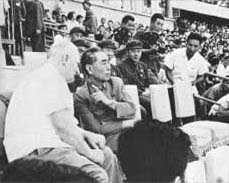
Zhou Enlai comes down from the praesidium to sit with Rewi, 1970.
The Chinese Premier Zhou En Lai remained a good friend of Rewi’s, and on one occasion in 1970, at a sports stadium (Chinese size: 400 000 capacity) in Beijing, Zhou left his seat in the praesidium and came down to the lower benches where Alley was sitting by himself. To the astonishment of people all over the stadium he remained with Alley throughout the function, “That’s the kind of thing he [Zhou] would do to support people he felt were also working for the same kind of thing that he wanted.”
“Ai-Lao”: Honored and Revered
In 1977, the Premier Deng Xiaoping gave a official banquet in Beijing to honour Alley’s 80th birthday. After the death of Mao in 1976 the Gang of Four lost favour and in the 1980s were brought to trial – the Cultural Revolution recognised as a tragedy. Alley’s honours were fully restored. He spent the last years of his life as one of Beijing’s living treasures – known as Ai-lao, a popular title of veneration.
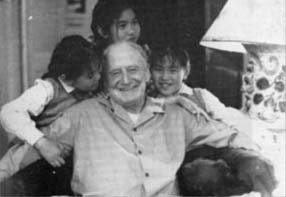
He vigorously continued translating, writing, corresponding, and meeting the international demands of magazines and papers. On his last visit to New Zealand, in 1972, Alley was conferred an honorary Doctorate of Literature by Victoria University in Wellington. In 1984 the first anthology of modern Chinese poetry was translated by Alley; his translation work is recognised as authoritative. The well-known American poet William Slaughter writes in e-zine Webdelsol:
“When I was in China, living and working there, I came across Rewi Alley’s New World Press edition, 1983, of Bai Juyi’s poems, his “re-creations” in English of them. In his preface, Mao Dun claims for Alley’s edition of the great T’ang poet its status as “a milestone in the history of cultural exchange between China and the West.” Having known and loved Bai Juyi’s poems, for quite some time, in the English of other “re-creators” than Alley, I award him his claim.”
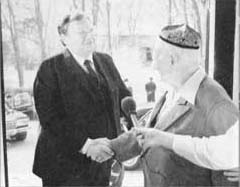
In 1984 Alley was officially recognised by the New Zealand Government when he was awarded a Queen’s Service Order for services to the community. For the ‘notorious Rewi Alley’ it represented a reconciliation between the country of his birth and his adopted homeland. In 1987 Geoff Chapple and David Harre produced a final documentary on Alley, with then Prime Minister David Lange narrating it – a symbol of a final homecoming for a man who had always followed his instincts and was often uncomfortably at odds with his home country’s foreign policy. The documentary was screened in New Zealand on Dec 2 1987, Rewi’s 90th birthday, and a copy of the film was couriered to him. He died, aged 90, three weeks later on December 27th.
 A portrait of Rewi hangs in Beijing’s national gallery. In 1997, to mark the centenary of his birth, the Great Hall of the People in Beijing was opened in his honour for a banquet and speeches, and a great tomb was erected in Shandan to house Alley’s remains.
A portrait of Rewi hangs in Beijing’s national gallery. In 1997, to mark the centenary of his birth, the Great Hall of the People in Beijing was opened in his honour for a banquet and speeches, and a great tomb was erected in Shandan to house Alley’s remains.
A portrait of Rewi hangs in Beijing’s national gallery. In 1997, to mark the centenary of his birth, the Great Hall of the People in Beijing was opened in his honour for a banquet and speeches, and a great tomb was erected in Shandan to house Alley’s remains.
In New Zealand to commemorate the centenary then Prime Minister Jim Bolger announced a NZ$100 000 grant for a Rewi Alley agricultural extension unit at Gansu University. The University of Waikato has a prize for modern Chinese studies named in Alley’s honour, and a plaque commemorates his life-work and achievement at his cherished old school, Christchurch Boys’ High. Silk threads from Alley’s life continue to work interesting patterns. In 1998 Alley, an opera composed by Jack Body and written by Body and Geoff Chapple, debuted at the New Zealand International Festival of the Arts, for which it was commissioned. Opening to widespread acclaim: “a brilliant piece of musical theatre”, it was performed by a collaboration of New Zealand and Chinese artists, a cultural meeting that Alley’s life stood for. Renowned New Zealand percussion group ‘From Scratch’ released an album em>Three Pieces From Gung Ho 1,2,3D in 1982, and American rock’n’roll legend Patti Smith’s latest album is named Gung Ho. ‘Working together’ – the connection that Alley made between a phrase with an idea, with action, has slipped powerfully into the global language.
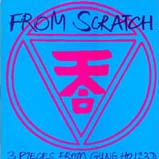
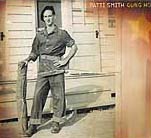 Bridge to Understanding
Bridge to Understanding
Alley’s life was dedicated to fostering understanding about forces that were changing a quarter of humanity. A completely new society came into being, and Alley was continuously optimistic that links would be forged between two worlds. More than a decade after his death it would no doubt broaden Alley’s permanent grin to note that some of the strongest links are being forged with Aotearoa. Kiwi educationist and entrepreneur Gordon Dryden, along with American Dr Jeanette Vos, has written The Learning Revolution, about how to combine modern teaching methods with multi-media technology. Forget Harry Potter, it was the world’s top-selling new work in 2002, surpassing Chairman Mao’s Little Red Book to achieve at least 9 million sales in China in 1999. Kevin Roberts, co-founder of nzedge.com and CEO of Saatchi & Saatchi, China’s largest advertising agency, cuts a contemporary take with his “China Cool” message. The Chinese Army is adopting rugby as an official sport.
It is almost embarrassing to have to conclude, to lionise and celebrate Alley’s life: like learning the stupefying simplicity of a zen lesson from a Bai Juyi poem. Some words seem superflous, you feel conscious of constructing Rewi Alley, against his example and action. His educational philosophy is as much his life theory:
“I hav
e been accused of being a Tolstoy, and a Utopian at times but I have always felt it was important to produce people rather than machines to begin with. People to control machines rather than machines to control people”
The Communist Revolution was a history-changing broom that swept through China. Alley’s life is framed by it, arriving 20 years before and departing nearly forty years later. He came from one of the smallest nations in the world to move and be moved by one of the largest countries in the world. Edgar Snow wrote that,
“[Alley] means to China at least as much as Colonel Lawrence meant to the Arabs, and perhaps more. When Lawrence brought to the Arabs the destructive technique of guerilla warfare, Alley is teaching China the constructive organisation of guerilla industry.”
His life was a meeting of edges, powered by a belief in harmony, action and simplicity; “trees and grass” is the slogan of an Alley school. Alley’s life is an allegory, a bridge between East and West. But the superlatives shade a man who was primarily a “god of small things”, a fixer of problems, a passionate practical worker who found the idea of a knighthood absurd.
Rewi was at work in Shandan in early 1945, his sleeves rolled up and covered with dust, when suddenly two middle-aged gentlemen in cutaway coats and bowler hats, MPs from England, arrived. One of them George Wood, carried the offer from the British Government of a knighthood. Chapple recounts Alley’s sharp response to the title ‘Sir Rewi Alley’:
“I couldn’t imagine. That’s a ridiculous thing! … It was a hopeless idea because I was trying to work with people. They went back after that. I thanked them for their kindness and consideration, but it was just an impossible thing to do. I still feel the same way as the ordinary Chinese does about honours and things like that. He doesn’t think much of them.”
Rewi Alley: a humanist with the “Gung Ho” attitude – a soul behind the slogan.
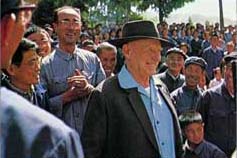
Thanks to Geoff Chapple for photo permission and for help with compiling this story. Geoff is currently doing a Kiwi version of the Long March for the Te Araroa Trust . The aim of the trailblazing Te Araroa (meaning ‘long pathway’) trust is to create a continuous foot trail route from Cape Reinga to Bluff by the end of 2000.
Postscript:
In November of 2002 a book on Rewi Alley, Friend of China – The Myth of Rewi Alley, by Anne-Marie Brady (Routledge Curzon, $102.95) was published to a series of of reviews responding to Brady’s revision of Alley’s character and the mythology supposedly surrounding his life. Heroes are not usually straightforward and their myths are often debated and contested. NZEDGE publishes a selection of reviews here.
School Resources
References
Books and articles:
The list of Alley’s 66 books, ranging from journalism, non-fiction, poetry, history, and translations, is extensive. For a comprehensive list see:
Alley, Rewi (1986). Rewi Alley: An Autobiography, New World Press, Beijing, 1986, New Zealand Edition, 1987.
(1998). Review of Alley, The Opera, “Alley shines bright as musical theatre”, Dominion, February 28.
(1998). Preview, “Composer Identifies with Alley”, Dominion, February 27.
Chapple, Geoff (1997). “The God of Running Repairs”, Sunday Star-Times, November 30.
Brady, Anne-Marie (1994), “Man to Myth: Rewi Alley of China”, MA thesis, The University of Auckland.
For the definitive biography of Alley see:
Chapple, Geoff (1980). Rewi Alley of China, Hodder and Stoughton, Auckland. The third edition of the book (1988) contains material from Chapple’s visit to China to film the documentary The Second Blade of Grass and material covering Alley’s death.
Video:
The Second Blade of Grass, directed and produced by David Harré and Geoff Chapple, Dawn Productions, 1987. Narration by David Lange.
Gung Ho: Rewi Alley of China, Directed by Geoff Steven, written by Geoff Chapple, produced by John Maynard, New Zealand Film Commission, 1980. Includes a video of a From Scratch performance, Drum/Sing, directed and produced by Gregor Nicholas, 1985.
Check out the From Scratch website.
Web References:
General:
See the New Zealand China Friendship Society (founded and inspired by Alley) for a short bio and examples of Alley’s continuing legacy:
http://www.nzchinasociety.org.nz/index.html
Short biographical entry on Alley:
http://www.embassy.org.nz/encycl/a2encyc.htm
[Accessed July 2000]
“Friends of the Chinese Revolution”. Piece from China Today to mark the 50th Anniversary of the Revolution
http://www.china.org.cn/ChinaToday/ct99/99-10/ct99-10e-6.html
[Accessed July 2000]
Alley, the Opera:
Official Festival page on the opera Alley
http://www.nz.com/festival/alley.html
Thank you to the New Zealand International Festival of the Arts for their kind permission to use the opening portrait of Alley.
[Accessed July 2000]
Chinese star Chen Shi-Zheng about the cultural bridges formed in Alley
http://www.evpost.co.nz/update/fest16.htm
[Accessed July 2000]
Geoff Chapple on the opera (plus photos of rehersal)
http://www.teararoa.org.nz/walk23.html
[Accessed July 2000]
Poetry:
American poet William Slaughter in e-zine webdelsol on the Alley translation of Chinese poetry:
http://webdelsol.com/Editor’s_Picks/ep1-ws.htm
[Accessed July 2000]
Alley translation of Bai Juyi poem, “A piece of fine Liao silk” – on appreciating what’s under your nose
http://www.levity.com/digaland/juyi.html
[Accessed July 2000]
Alley translation of a poem by Li Po (701-762), “Alone and Drinking Under the Moon”
http://www.poetrytodayonline.com/DECcp.html
[Accessed July 2000]
Miscellaneous:
African Books Collective review of Shandan: a Lesson in Creative Education, and its relevance to development issues in Africa today:
http://www.africanbookscollective.com/edu/htm/saaice.htm
[Accessed July 2000]
University of Waikato web-board discussion on the future of education
http://list.waikato.ac.nz/archives/leaders-net/1999/06/msg00052.html
[Accessed July 2000]
Patti Smith: Gung Ho album web-site
http://www.gungho2000.com/
[Accessed July 2000]
National Library media release about the Alley archives given to the National Library of New Zealand by the Chinese People’s Association for Friendship with Foreign Countries:
http://www.natlib.govt.nz/whatsnew/mediar/rewialley.htm
[Accessed July 2000]
Christchurch Boys High School records the 1999 Chinese Premier’s visit, includes pictures of the Rewi Alley memorial:
http://www.chch.school.nz/cbhs/Events/visit/
[Accessed July 2000]
University of Waikato Scholarship in Chinese studies
http://calendar.waikato.ac.nz/feesandloans/scholarshipsprizesawards.html
[Accessed July 2000]
Leeds University, MA in Theatre Studies: Alley’s text on the Peking Opera:
http://www.leeds.ac.uk/theatre/ma/options.htm
[Accessed July 2000]
Relationship with the Canadian writer George Ryga
http://www.ucalgary.ca/library/SpecColl/rygabioc.htm
[Accessed July 2000]













Editor: A great deal has been surmised about Rewi's 'love-life' and sexuality. Most likely he was gay, though never outwardly - this may have been one of the further reasons why he was viewed as an outcast by a conservative 1950s/60s New Zealand. Anne-Marie Brady's MA thesis, "Man to Myth: Rewi Alley of China", MA thesis, The University of Auckland (1994) deals in some part with his sexuality. We chose not to emphasise this part of Alley's life, and his biographer Geoff Chapple choses the same approach in his authoritative biography of Rewi. Writer Ottawa, Canada
I read with interest you article on Rewi Alley. I have two questions about Alley which you may be able to help me with. The questions may seem odd, but they are motivated by research I am doing on China in the 1930s and after, and within the context of that research they make perfect sense. First question: Did Rewi Alley ever fall in love? If so when and where? In New Zealand? In World War I? In China? Second Question: What did Alley's nose look like? In "Journey To A War", Christopher Isherwood devotes 8 pages to Alley. Isherwood describes Alley's nose as "short and rugged", but none of the photos I've seen of Alley suggest that his nose was thus; to the contrary it looks big, strong, and sharp. Do you know of any place where there is a description of Alley's nose which contradicts Isherwood's? This may seem like a ridiculous question, but it's not. I think that Isherwood deliberately misrepresents Alley for reasons that it would be to complex to go into here. Any help you can provide with respect to these questions will be greatly appreciated. Yours sincerely, Geoff Simas